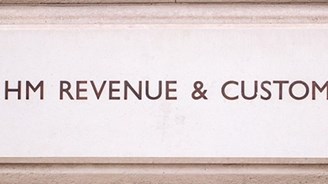What Is A Digital Link For MTD Anyway?

Should we be wary or embrace the fact that HMRC decided to publish more information on Making Tax Digital on Friday 13th, a date on the superstition spectrum which ranges from being unlucky for some to full on paraskevidekatriaphobia (yes – it is a real word)?
Unfortunately the announcements on Friday do not indicate any delay to MTD for VAT in spite of growing demands for postponement but we did get two important ‘documents’.
The first a new VAT notice on MTD for VAT and the second a list of software developers (software suppliers list ) HMRC is currently working with on the MTD VAT pilot. It is an aspect of the first document that I want to focus on in this blog and that is what constitutes a digital link.
As part of MTD, businesses registered for VAT with a taxable turnover above the VAT registration threshold of £85,000 will need to keep VAT records digitally and file their VAT returns using MTD compatible software. This will start from their first VAT period starting on or after 1 April 2019.
Whilst it is increasingly common for business records and accounts to be recorded and maintained digitally, using a computer/tablet/smartphone app, it is not by any means universal. MTD however, will require VAT returns to be submitted digitally via HMRC’s Application Programming Interface (API), using the information maintained in the digital records of the business.
Some (likely larger companies) entities will already be quite advanced in using complex software programs for accounts and VAT returns but many smaller businesses still handover to their accountant the equivalent of a brown paper bag of documents for processing. Many family run businesses may still be only using basic accounting software package to record primary book-keeping transactions from which information is then extracted and transferred to their accountant to prepare VAT returns and year end accounts etc. However, under MTD the method of transfer of information will be changing as it will have to be via a digital link where the software is not directly functional compatible software. This extract from The VAT notice for MTD refers:
‘Data transfer or exchange within and between software programs, applications or products that make up functional compatible software must be digital where the information continues to form part of the digital records. Once data has been entered into software used to keep and maintain digital records, any further transfer, recapture or modification of that data must be done using digital links. Each piece of software must be digitally linked to other pieces of software to create the digital journey. It follows that transferring data manually within or between different parts of a set of software programs, products or applications that make up functional compatible software is not acceptable under Making Tax Digital. For example, noting down details from an invoice in one ledger and then using that handwritten information to manually update another part of the business functional compatible software system.’
HMRC does not consider the use of ‘cut and paste’ to select and move information, either within a software program or between software programs, to be a digital link. So what is a digital link?
A digital link includes linked cells in spreadsheets, for example, if you have a formula in one sheet that mirrors the source’s value in another cell, then the cells are linked.
HMRC will also accept digital links as:
- emailing a spreadsheet containing digital records to a tax agent so that the agent can import the data into their software to carry out a calculation (for instance, a Partial Exemption calculation)
- transferring a set of digital records onto a portable device (for example, a pen drive, memory stick, flash drive) and physically giving this to an agent to import that data into their software
- XML, CSV import and export, and download and upload of files
- automated data transfer
- API transfer
I certainly found the first bullet above interesting as I (not being an IT specialist) would have thought that attaching a ‘document’ to an email and sending it requires manual intervention but what does not seem to be acceptable is cutting and pasting the information into the spreadsheet from the records first and then emailing it. Getting clients to understand the fine distinctions here may be tricky!
There is however some additional time to ensure these links are in place between all parts of the client/agent software process as HMRC have stated that there will be a soft landing for the first 12 months.
‘For the first year of mandation (VAT periods commencing between 1 April 2019 and 31 March 2020) businesses will not be required to have digital links between software programs. The one exception to this is where data is transferred, following preparation of the information required for the VAT Return, to another product (for example, a bridging product) that is API-enabled solely for the purpose of submitting the 9 Box VAT Return data to HMRC. The transfer of data to this product must be digital.’
I will shortly be publishing some further articles with commonly asked questions but if you have any more questions get in touch and we will try to direct you to a solution.



